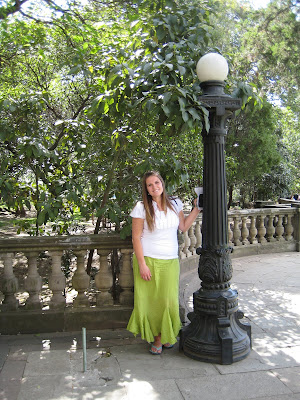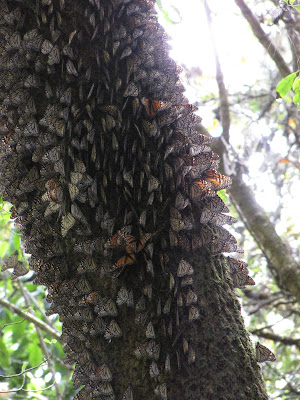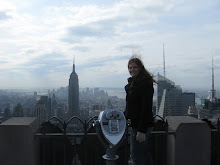We got there very early. Only one other group of guests had arrived so it was pretty neat. Beathtaking to watch the sun rise higher and higher over the pyramid. I think we could have stayed there all day and hiked and looked. It go warm which made it all the more fun.
When we were on the pyramid of the moon I wanted to get my picture taken by the edge with my mom with the Pyramid of the sun in the background. She was scared to death. She did not want to do it but i kinda handed my camera off to another tourist and din't give her a choice. Haha. Thank goodness for that because i love the pictures and the memories of this amazing place!
.jpg)
.jpg)
.jpg)
.jpg)
.jpg)
.jpg)
.jpg)
.jpg)
.jpg)
.jpg)
.jpg)
.jpg)
A history if you are interested (from Destination 360):
Teotihuacán is the largest known pre-Columbian city in the Americas, as well as the name of the civilization that ruled the city and the surrounding area. Teotihuacán is located about twenty-five miles northeast of Mexico City, and the modern day city of San Juan Teotihuacán has a population of about 45,000 people. Hotels and transportation are available from San Juan and other near by cities.
Teotihuacán history is an enthralling web of mystery. Although it once counted more inhabitants then contemporary Rome, its citizens disappeared without a trace in 700 A.D. The name itself means "place where gods were born" , echoing back the belief that the gods of the world created the universe here. The first known settlements in Teotihuacán Mexico were around 500 B.C. and the construction of the famous Teotihuacán Pyramid of the Sun began in about 100 B.C. The Teotihuacán Pyramid is the second largest in the New World (after the Great Pyramid of Cholula) and offers impressive views of the valley and ceremonial, "Avenue of the Dead" that open out below.
Located across from the Teotihuacán Pyramid of the Sun is the Teotihuacán Pyramid of the Moon. Climbing to the apex of this giant will also offer sweeping views of the surroundings, as well as an excellent look at the Avenue of the Dead. Near the Teotihuacán Pyramid of the Moon is the Palace of Quetzalpapalotl, another of the more famous structures that celebrates Quetzal-Mariposa, a mythical bird-like butterfly.
A host of other temples and sacred pyramids dot the Teotihuacán landscape and yet despite the incredible size of this ancient city, solid evidence as to why it ended and what happened to its inhabitants is still to be found. Most experts who study Teotihuacán history subscribe to one of two ideas; either that the elite sections of the city were burned to the ground by the poorer and more disgruntled inhabitants or that a neighboring group such as the Toltecs sacked and burned the city. Whichever version of Teotihuacán history sounds most likely to you, it is believed that the city was burned and was eventually inhabited and preserved first by the Toltecs, then later by the Aztecs.











.jpg)
.jpg)
.jpg)
.jpg)
.jpg)
.jpg)
.jpg)
.jpg)
.jpg)
.jpg)
.jpg)
.jpg)
.jpg)
.jpg)
.jpg)
.jpg)
.jpg)
.jpg)
.jpg)
.jpg)
.jpg)



























